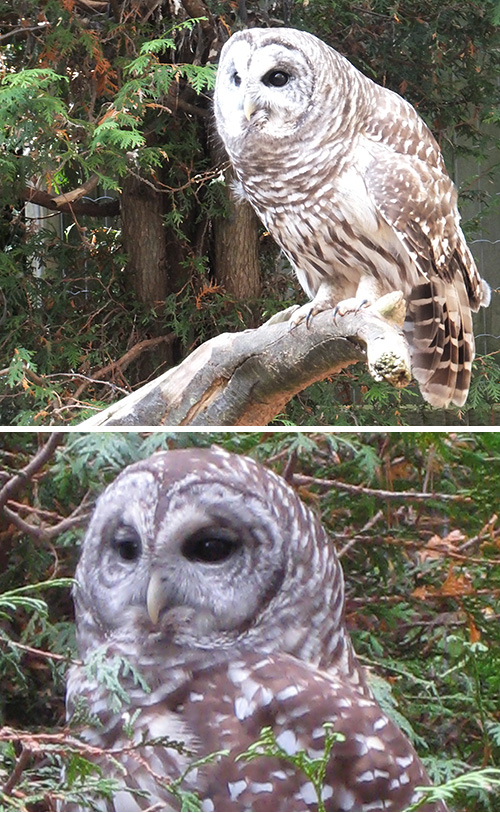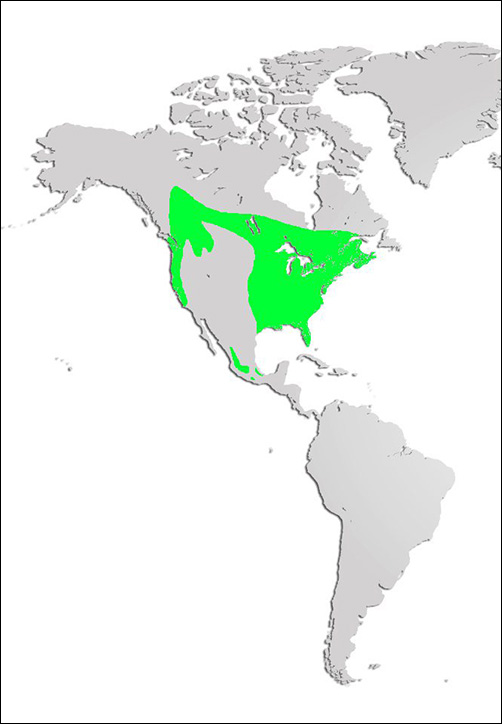Barred Owl
Class: Aves
Order: Strigiformes
Family: Strigidae
Genus: Strix
Scientific Name: Strix varia
Description: Barred owls are 43-55cm (17- 22 inches) in length. They are greyish-brown in colour with barring across the upper breast and neck and streaks running down the body.
Distribution and Habitat: They live in mature forests, preferring mixed woods near water and fields. They prefer to nest in tree cavities, but will use large stick nests of other birds. Barred owls are found across Canada, the eastern United States, and as far south as Mexico.
• See Map
Diet: Because they have weak talons, barred owls hunt small prey, such as voles, shrews, frogs, salamanders, fish, insects and snakes.
Life Cycle: Barred owls usually mate for life and breed from February to June. They lay between 2-4 eggs which hatch after about 4 weeks.
Adaptations: All owls have special adaptations for night hunting. Their eyes can function in low light conditions and their hearing is amplified by the shape of their head. The leading edges of their flight feathers have a frayed edge that allows them to fly virtually soundless.
Did you know? The barred owl is Nova Scotia's most common owl. It has a large head, no ear tufts and dark eyes. This owl's familiar night call sounds like "who-who-who-cooks-for-you-all".
The birds of prey in the Park have been injured and cannot be returned to their natural habitat.



